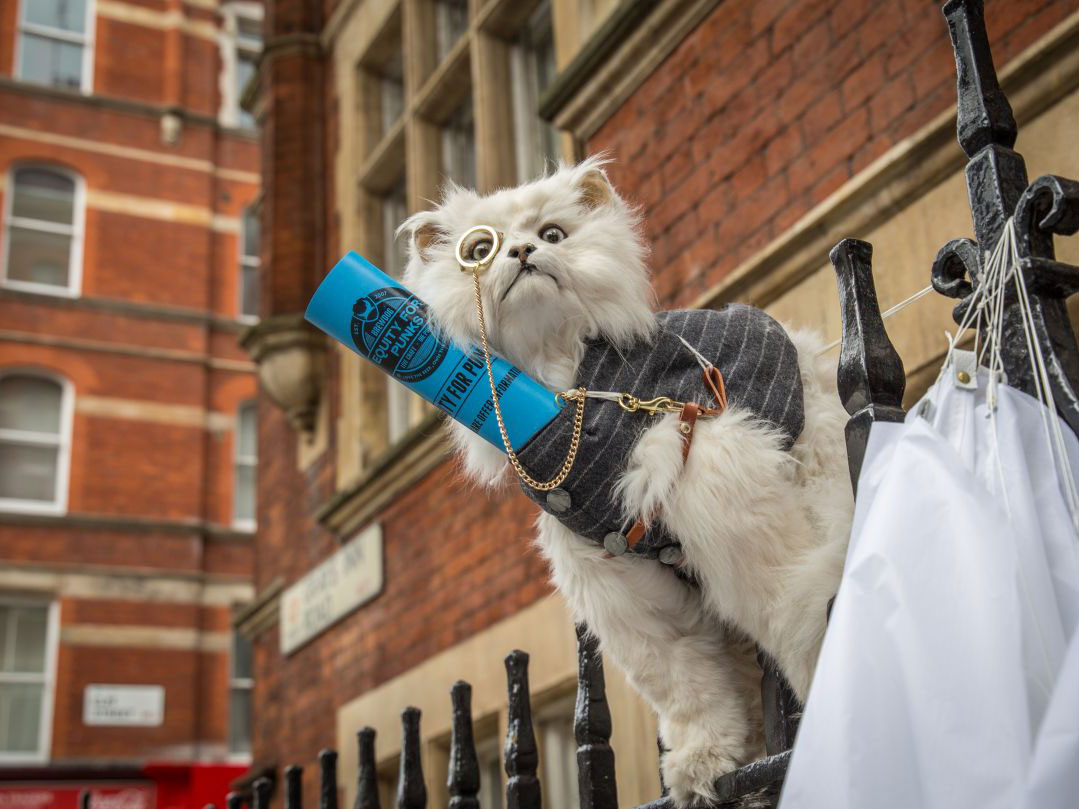“We didn’t have a big budget as a startup business, and effective, engaging PR has been the best way for us to get noticed for a fraction of the budget big competitors set aside for marketing and advertising. By pushing the boundaries of what our business could be through creative PR, we have been able to drive global conversation and build our community. Our mission is to make other people as passionate about great craft beverages as we are. PR has been a key component of building our community through inspiring storytelling via the media,” James Watt, co-founder of Brewdog.
In marketing there are few things more effective and that can bring more credible exposure for your buck than a newsworthy, expertly-written and deftly pitched press release accompanied by an impactful picture. Do not for one minute think your business isn’t big enough, or sufficiently interesting for PR. Every company has its own stories and a competent PR professional can create stories for any company. Trust me, I was even once tasked with generating monthly media coverage for an offshore oil crane company. It’s a PR professional’s job to extract stories on a consistent basis, but then most business owners could also do this – if they regularly had the time to reflect on what’s happening. To deliver successful PR for your business, you need to think of your organisation and what it does as if you were a journalist – considering what readers would be interested in from an objective perspective. As an integrated communications agency, we’re big believers in the power of a strong story. Our monthly PR activity for clients is often built around a main story or angle we’ll push out through media and influencer contacts, then out further still through social channels and online advertising. It’s often these stories that elevate our clients’ profiles far above that of their competition in terms of awareness and competitive share of voice.
While PR works for all types and sizes of organisation, it’s much more effective if a business is doing something fresh, interesting and exciting in the market. An extreme example is the craft brewer, Brewdog, which has mushroomed as a company, from two guys selling bottles from out of the back of their van in 2007 to 1,800 employees and 80 bars worldwide at the start of 2019 – and its PR machine has played no mean part in it. The driving force behind the success of Brewdog’s PR is the bravery of its founders, James Watt and Martin Dickie, who I have been aware of for some time due to their PR exploits. Brewdog’s owners are masters of using PR for delivering their messages and you can spend hours browsing through their PR stunts online, which have included: dropping toy ‘fat’ cats from a helicopter in London to celebrate achieving a crowdfunding record; launching a drink called Hello My Name is Vladimir that poked fun at a controversial Russian ban ahead of the Winter Olympics, and promoting their End of History ale by packaging it inside the bodies of dead animals – the list goes on. Brewdog is quite fearless, as it pushes ahead with controversial ways to get its brand into the media spotlight. Most recently it announced to the media it was launched its own airline claiming to be the world’s first craft beverage airline, complete with a slickly produced video clip, which hit the global headlines – at the time of writing this, the story had over 12,000 hits on Google. Take a moment to consider the fact that Brewdog simply makes beverages – but it is consistently turning ideas into priceless global media coverage using PR-led integrated communications tactics.
While Brewdog is selling its products to the general public, PR can be just as effective for business-to-business communications. We have clients in the construction, engineering, oil and gas and technical sectors who get doors opened, are added to tenders and win multi-million-dollar contracts from articles and thought-leadership pieces we create, get published and then push out for them to their niche target audience and decision-makers. Nearly all industries have trade titles that are read by collective target audiences, so never consider your company too niche or ‘boring’ to bother with PR.
A strong story can appear in print and on the website of publications read by your industry and potential customers. The social media feeds of that media will usually share your news, often to huge audiences. Online news can massively boost your SEO and online presence. You have the opportunity to share this valuable content on your website, then through your social media channels to your own audience, then to a new audience through targeted social and online advertising. When potential customers are researching which company to use, their first stop is often Google and the brand awareness, credibility and online legacy you have created there can be the difference between drifting into obscurity or getting a meeting to land that next deal.
Particularly with corporate PR, there’s often the view that there ‘isn’t much to talk about’. This can be a common misconception among busy executives. As PR professionals, the people we’re speaking with, or interviewing for content, are nearly always in senior roles and time short. They rarely have the headspace to take a step back and consider all the important and interesting work they’re doing. This work is nearly always newsworthy for their niche target audience and, regularly, to a wider business audience. A good PR professional is highly skilled at digging out the golden nugget. They turn a conversation into precious stories that can engage an audience and disseminate a large number of important key messages about the company along the way.
Businesses can’t necessarily be expected to know what’s interesting about themselves or what the media would find interesting about them. PRs marry the key messages and reputations of businesses with what their target audience, and therefore the relevant media, is interested in. The best trick for organising your thoughts and sourcing the strongest news stories is to compartmentalise the three distinct categories the news topics fit into, which I call The Voices: Industry, Corporate and Product.
Industry Voice is opinion, commentary and predictions, or research and statistics relating to the industry as a whole, that will often be of interest to a broad range of media and readers. This type of PR can generate the biggest returns in terms of coverage and, if you get it right, even the odd front page or page leader story. For example, we released a story from a financial compliance company called CCL, giving an expert opinion about the amount of money laundering he predicted was happening in a country, which went straight to the front pages of the national business news media. We researched and executed another for currency exchange, Travelex, on the most expensive cities in the world in which to celebrate New Year, which went on to become one of the main stories of the day and led the nation’s news agenda.
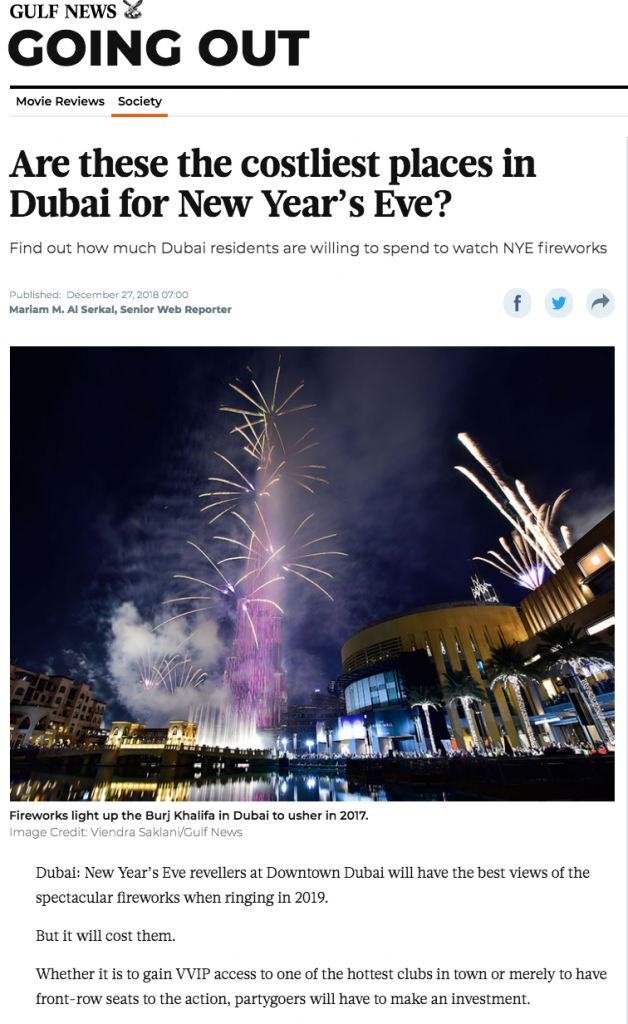
Corporate Voice covers stories about the organisation itself, such as a senior appointment, plans for expansion, annual returns or project wins. These can be of particular interest to trade media and an audience within the specific industry sector. They can also appeal to a broader audience if the news is considered ‘big’ enough. The simplest form of this type of PR would be senior appointments, where the release may seem boring to some, but it is actually very interesting in the respective industry media, whether Energy, Construction or IT. For example, we released news of the appointment of a new regional head of Zurich Insurance, which hit the usual insurance and finance media, but also led to a host of interview requests and impressive mainstream business publications, television and radio coverage, due to the fact the brand is so well-known.
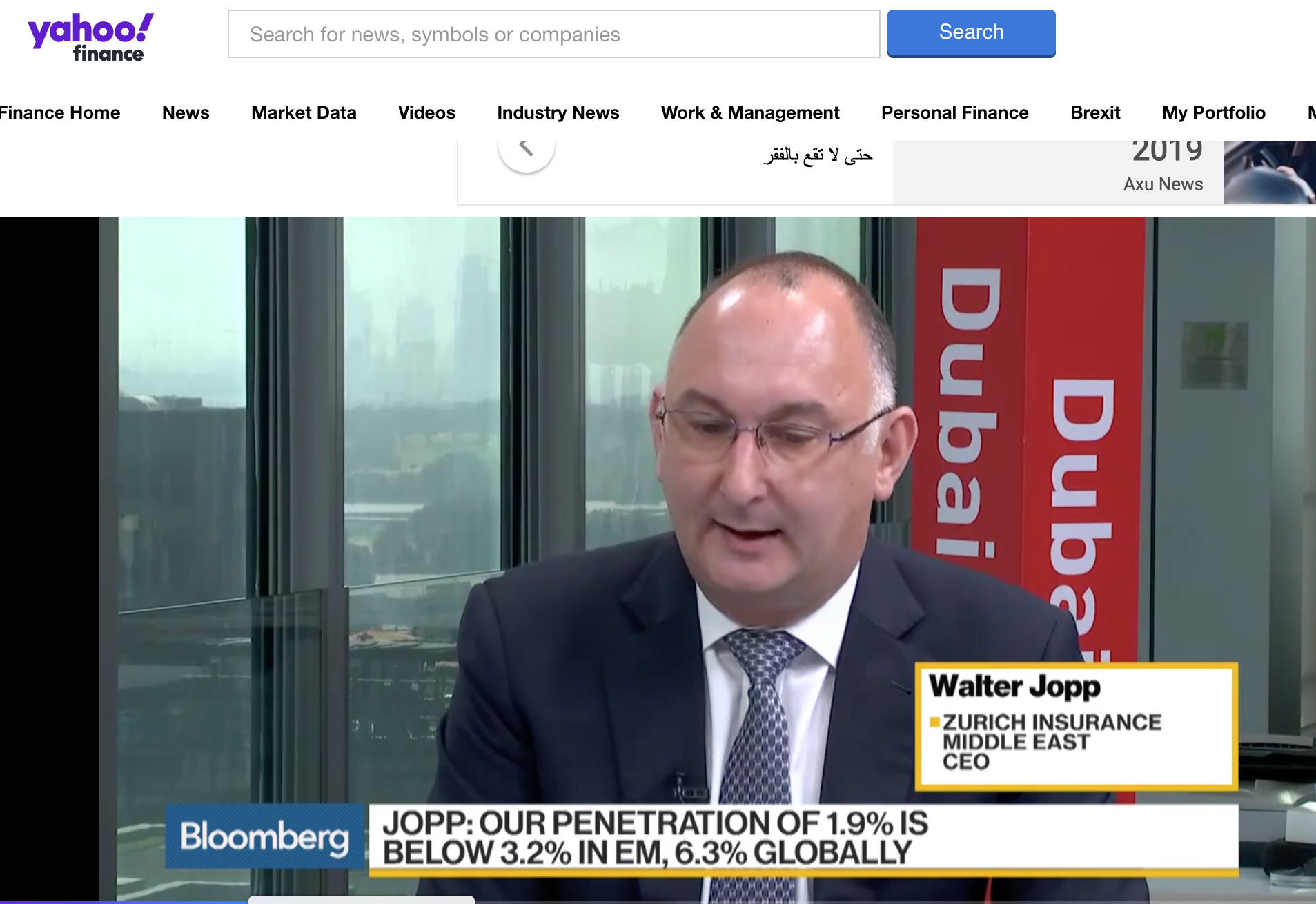
Product Voice stories focus on the products and services of an organisation. These can be a tougher sell to media, so the key commercial messages often need to be embedded within a topic or piece of content that provides value to the reader. For instance, we promoted a study by Zurich about what the cost of putting your child through university would be 18 years from that date and it made national news headlines, regardless of the fact we mentioned Zurich’s saving products in the release and all the broadcast interviews. The story was a means to an end of communicating to a huge audience and reminding them the importance of saving for their children’s education.
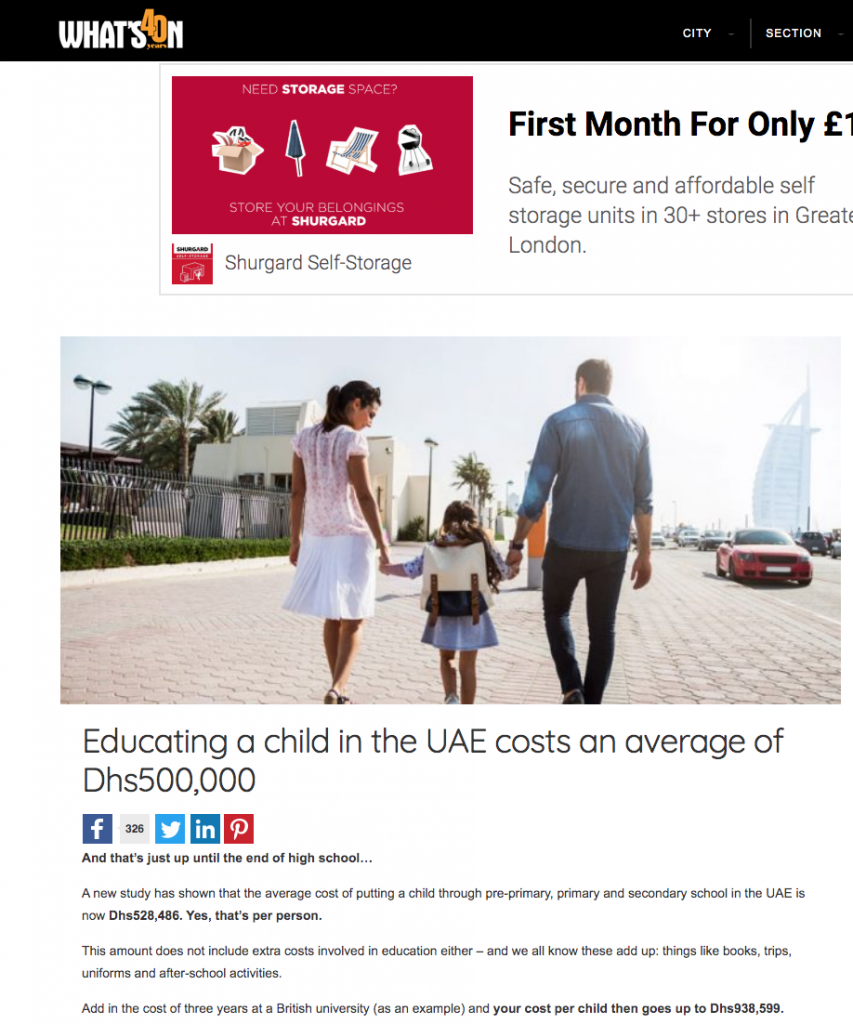
Over time, your public relations strategy should tell the story of your business, the people leading it and the individual parts that make it successful. On occasions when there are quieter months in terms of news, a proactive PR firm can generate a topical feature angle to ensure consistency of messaging and that new audiences are being continuously reached. In addition, the best ambassadors for organisations are usually their own employees, so never underestimate the power of profile articles. They provide the opportunity for experts within the company to speak with authority as thought leaders in the market, which can inspire confidence in the brand.
PR is powerful as it builds the identity of the brand and adds to its equity and value – even more so with the search-ability of all articles online. While carrying out a project for a social network start-up called Sportlobster, the global media coverage that was generated, from celebrity partnerships, to hitting key milestones as a new social network, were prevalent in every presentation to potential investors, as a way of demonstrating credibility and affirming why they should invest more money into the company. Similarly, when it comes time for a company to be sold, one of the first points of due diligence is to perform thorough searches on the organisation.
A simple example of PR’s ability to build real credibility is an experience we had recently with a construction consultancy client, for whom we generated an extensive project case study in the top aviation industry magazine, which detailed the client’s work on a high-profile international airport terminal in Abu Dhabi. Several months later they asked us to procure several print copies of the magazine, which they proudly handed over to the selection panel during their pitch to win a sizeable contract building another country’s new airport terminal. They won the contract and were convinced the glowing editorialised piece may just have given them the edge.
A good PR stunt has got to be my favourite element of the profession. I even remember when starting out in the PR industry two decades ago, buying books on PR to learn more about the career and flicking forward for details on any PR stunts. While not relevant for all types of business, a stunt can generate powerful, memorable coverage if executed well. It doesn’t even have to break the bank – the most creative and effective stunts usually don’t. For example, UK high street baker, Gregg’s, began generating media coverage from when it announced it would be hosting candlelit dinners on February 14, 2018. The company gained masses of national coverage due to the absurdity of the tongue-in-cheek idea the budget chain, famous for cut-price pastries and cakes, could pull off fine dining. The press release and media relations were accompanied by a well-planned integrated strategy, including choreographed video and social media activity. They produced impressive publicity before, during and well after Valentine’s Day, including regional media interviews with headlines like ‘pasties with passion’ and ‘I went on a date to Gregg’s’. Even the fallout from prospective diners angry at not being able to reserve a seat perpetuated the story and coverage. I love the fun way a sometimes simple, silly PR stunt idea can generate vast awareness and coverage, so if you have an idea at the back of your mind that might work as a PR stunt, speak to a PR professional about it and you might be surprised when it becomes a reality and ‘blows up’ publicity-wise.

UK supermarket chain Iceland arguably stole the show in terms of PR stunts in the run up to Christmas 2018, with how it used a video condemning palm oil use and its resulting destruction of the habitat of orangutans. The story of the societally-important, tear-jerking animation being ‘banned’ when Iceland submitted it for broadcast approval hit global headlines, with the world up-in-arms without fully understanding the background. Clearcast, which approves ads for British broadcasters said it couldn’t pass the advert because ‘political’ advertising is not allowed in the country. Iceland didn’t even create the ad, which is in fact a short animation that had been previously hosted on Greenpeace’s website. Digging deeper, it transpires Iceland had in fact been found to score worst of all the major UK supermarkets for stocking products containing palm oil by a campaign group. The supermarket had indeed only claimed it would remove palm oil from all its own-brand foods in the future. Once Iceland had received its – likely expected – rejection letter from Clearcast, it promptly proceeded to post about it on its YouTube channel and on Twitter, with the message: ‘You won’t see our Christmas advert on TV this year, because it was banned. But we want to share Rang-tan’s story with you… Will you help us share the story?’ This, of course, sparked widespread outrage at this bureaucratic crime against nature. Within a month of the story breaking, there had already been several million YouTube views; a tweet with six-figures in both likes and retweets and shares from some of the world’s biggest celebrities and superinfluencers. It quickly became the top story across major UK news media – then internationally it became a major trending story, as the world learned about this mere supermarket chain championing a fragile species’ cause against the system. A Change.org petition was launched to have the clip cleared for television, which had approaching a million signatures when this was written. You can make your own mind up as to whether Iceland has pulled off one of the most effective PR stunts in history by exploiting a cause, the system and the emotions of the public to their own benefit, despite itself being a contributor to the problem. What’s for sure is, if evaluated in terms of a PR stunt generating publicity and costing very little, if anything – it must be right up there. The content has already had much higher levels of engagement than it could ever have expected if it had been passed by Clearcast and Iceland had then paid the large costs of running it as a national television advert – it is all ‘earned’ coverage.
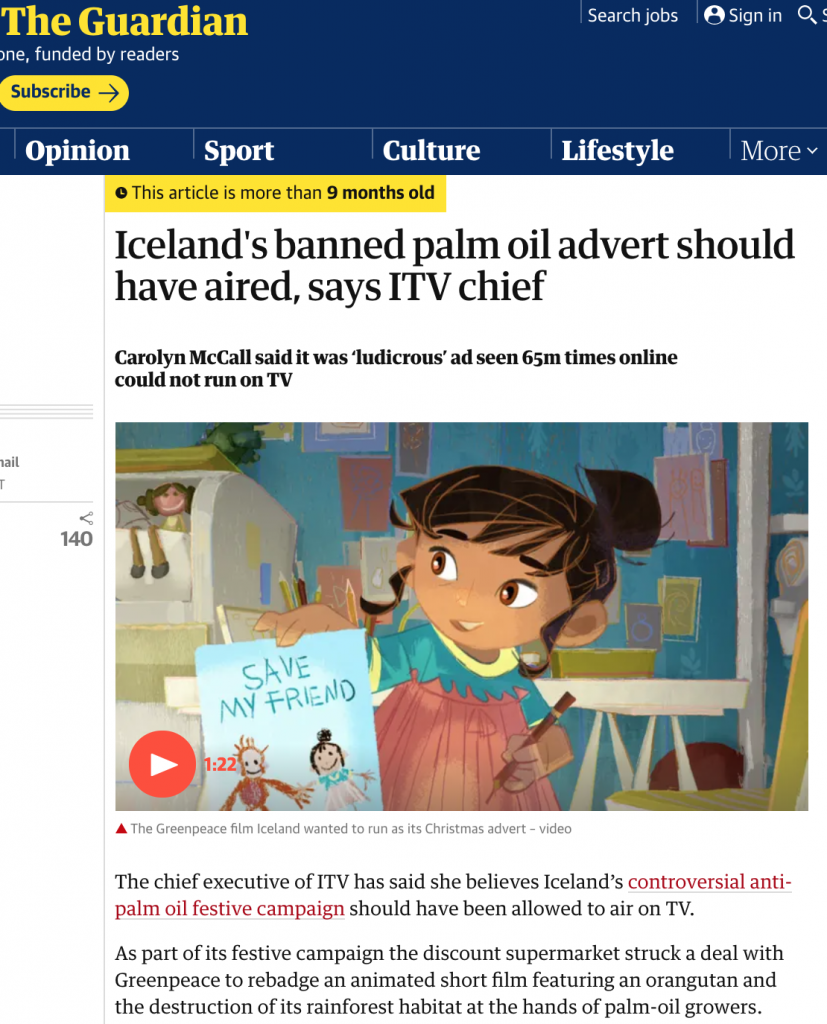
In general people like to do business with brands and people they trust, and PR is a top performing method of promotion in this respect. Most PR output is editorialised, usually with a level of implicit endorsement from a third party – someone else is delivering the message, not the brand itself. Therefore, it can be arguably the most effective marketing tool for rapidly building trust and credibility.
(extracted from Amazon bestseller, Promoting Your Business)
Did you manage to read my blog: simple tips to grab more control of Google’s first page & drive more sales
Get in touch today on +971504661368 or dubai@ih-c.com to arrange a consultation, in person or by video conference.
If you found this helpful,
please say ‘thanks’ by sharing👇

